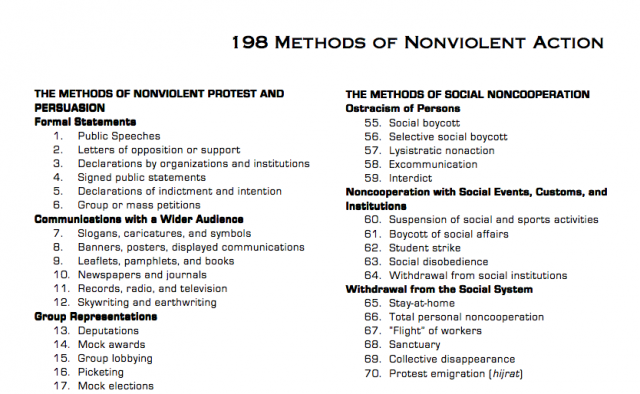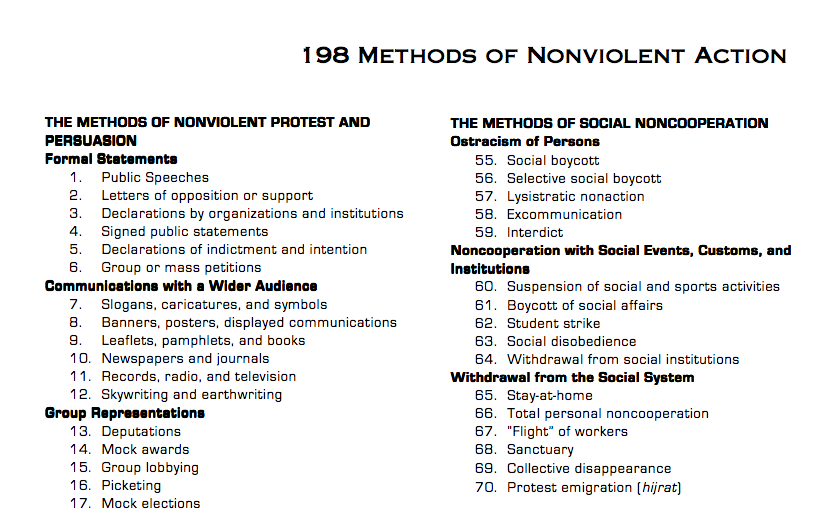
Over the last month, I’ve become rather interested in the work of Gene Sharp. He has published numerous books and journals that discuss, analyze and present realistic alternatives to violent action.
One of the most fascinating documents in his work is a list of 198 methods of non-violent action. The document breaks down the methods into three categories: nonviolent protest and persuasion, noncooperation (social, economic, and political), and nonviolent intervention.
In the last 30 year span of protest and revolution, many of these tactics have been proven worthy and effective by people putting them to practice.
In terms of our practice, I can’t help but reflect on how many of these tactics we’ve used in the past and even more interestingly, which ones we can use in future.
Check out the methods here.

Really glad you posted this, it’s going on my bulletin board.
It also makes me think that if you haven’t already read some of Critical Art Ensemble’s stuff around Electronic Civil Disobedience (where the argument is basically, “One essential characteristic that sets late capitalism apart from other political and economic forms is its mode of representing power: What was once a sedentary concrete mass has now become a nomadic electronic flow.”), it’d be a nice connection to this…
http://www.critical-art.net/books/ecd/ecd2.pdf
Yes! I’ve definitely read a lot of the work that Critical Art Ensemble has done. The part that’s really interesting to me in Electronic Civil Disobedience is the argument over how the idea of protest in a world of electronic flow has changed dramatically. The struggle is no longer a physical one, but an electronic, much more abstract one.
The idea being that before, it was possible to change or persuade a system/institution by physically being in a space, protesting with lots of people, literally obstructing the barrier for people to pass through. Now, for sake of example, a protest like Occupy Wall Street has become infinitely harder to do because we can no longer physically stop the, now digitized, money flow.
Critical Art Ensemble has done many interesting projects to address these types of changes. I think it’s really key in a nonviolent protest to be completely aware of all tactics being used by the opposition and even go as far as using those strategies against them.
In terms of our practice, I feel like we should always be aware of all these little nuances and strategies. Even if it’s just a discussion on what they mean to us (like you and I are doing right now). This is the kind of stuff that get’s me really excited. Makes me feel closer to really understanding the types of things we are capable of.
Maybe a reading list? Or a weekly short text of some kind. I have so many things bookmarked (as I’m sure everyone does) that would be awesome to share… good idea?
Really good idea!
You guys are both amazing.
Sharing would be great, a share bank between all of us for good reads. I need some more good reads!